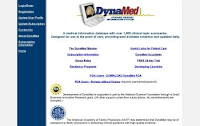
Globalization 04.06.2008
As weve read not everyone is jumping on the globalization train, including a group called Attac. Their many protests and public displays of opinion in Northern Germany, have been heard loud and clear.
The group in Northern Germany is lead by activist Werner Raetz. Attac Germany has taken on issues such as German labor market reforms, the US-led war in Iraq, health care reform, rail privatization and many others. The group’s biggest accomplishment to date has been forcing German politicians to at least give lip service to the need for socially responsible trade, said Raetz, who has a bushy white beard and matching hair.
Can this protest group really have a long term influence on the anti-globalization movement? A poll done by a university in Florence shows that this organization is making a difference, in the area of global issues.
Attac has activists in more than 40 countries, the majority of Attac's 90,000 members are European. Attac believes that globalization will advocate transferring economic control of the global economy to the private sector.
They have managed to turn a relatively abstract debate on taxes, trade and market inequalities into something tangible, bringing together environmental groups, trade unions and religious organizations. Their elaborate tax breakdowns are definitely getting all the liberal activists on board.
A Colombia University professor who is an economics fellow for the Council on Foreign Relations, said that he feels Attac places far too much emphasis on trying to get the Tobin tax implemented. Attac's tax plans would raise major questions about who would make spending decisions. The proferror has been an advisor on globalization issues to the United Nations and World Trade Organization, and has a greatly respected opinion.
He believes in the benefits from freer trade and multinational, and believes that Attac and other activists "muddy up these different dimensions of globalization,” which detracts from "informed public discourse."
Is globalization for everyone, maybe not... Do these liberals have a point that countries should keep product and profit close to home, does this really help or hurt their economy? Food for thought!!!!!
http://www.dw-world.de/dw/article/0,,3388986,00.html?maca=en-rss-en-all-1573-rdf







